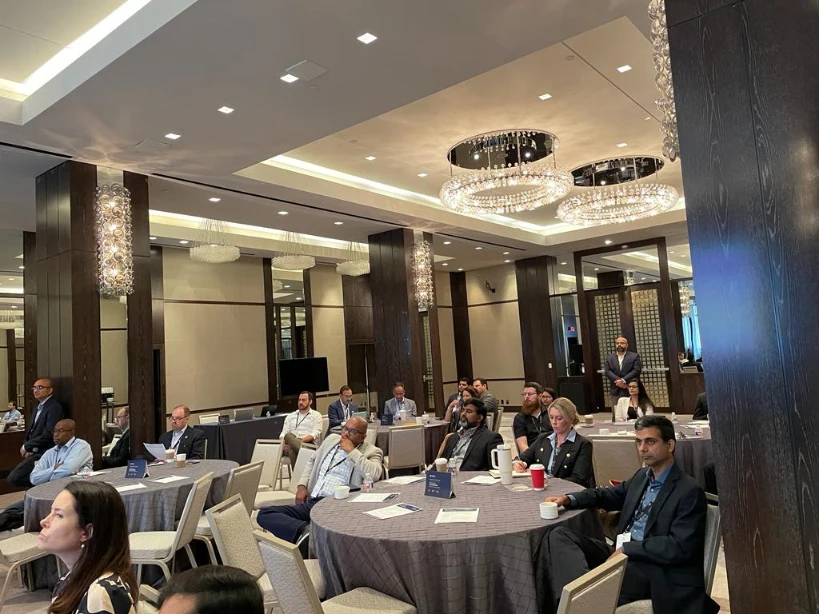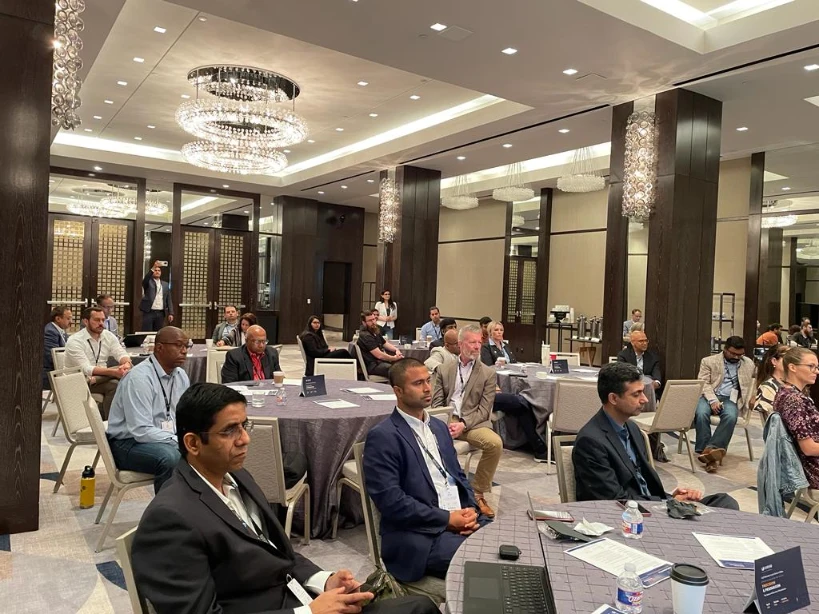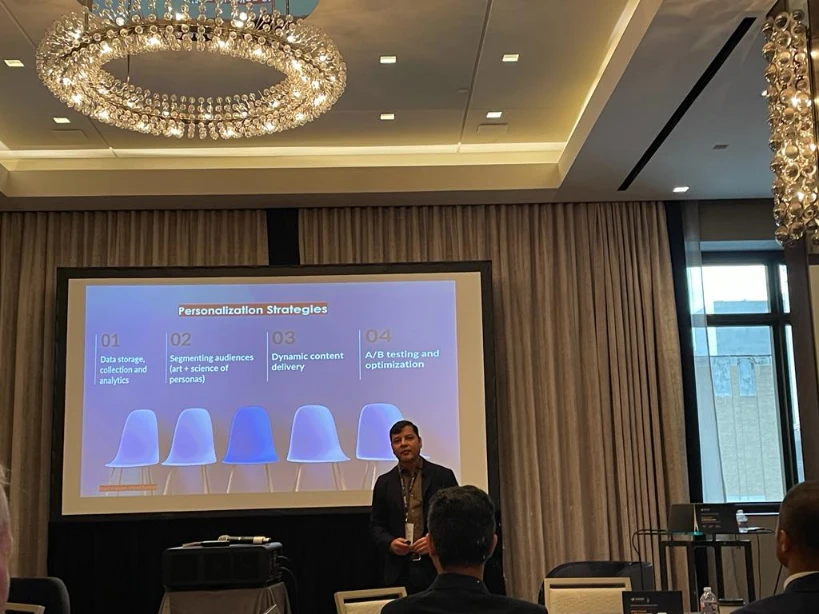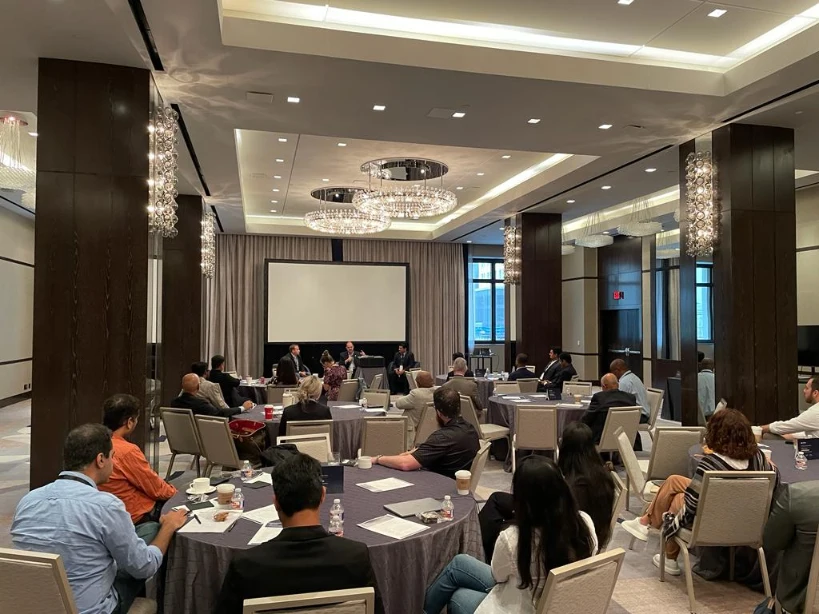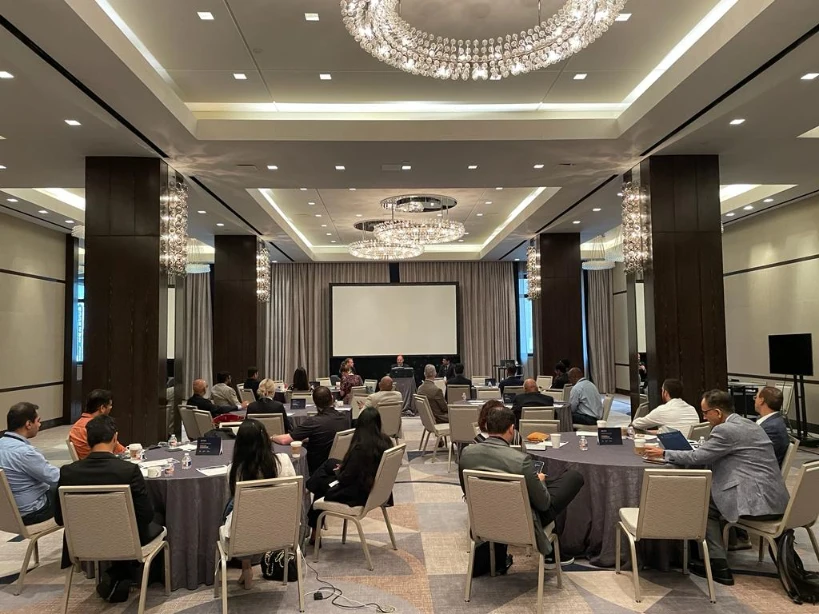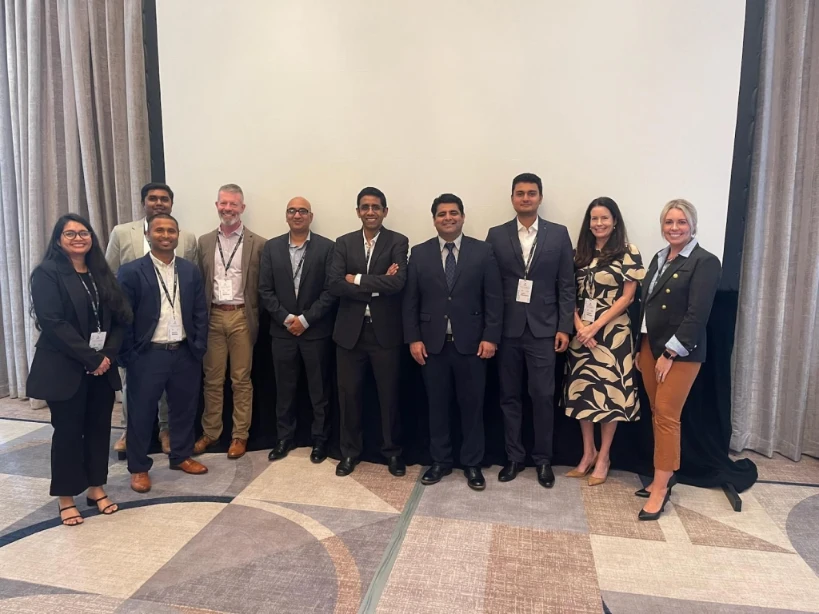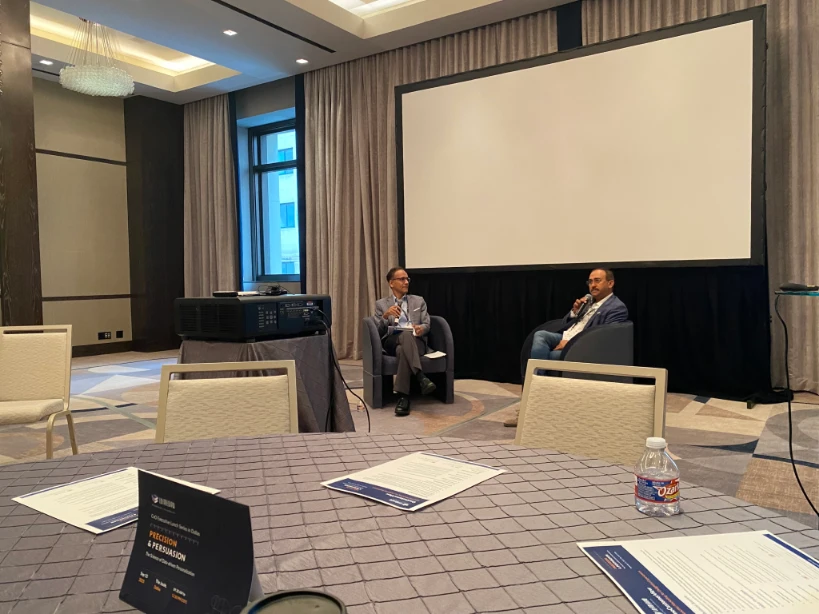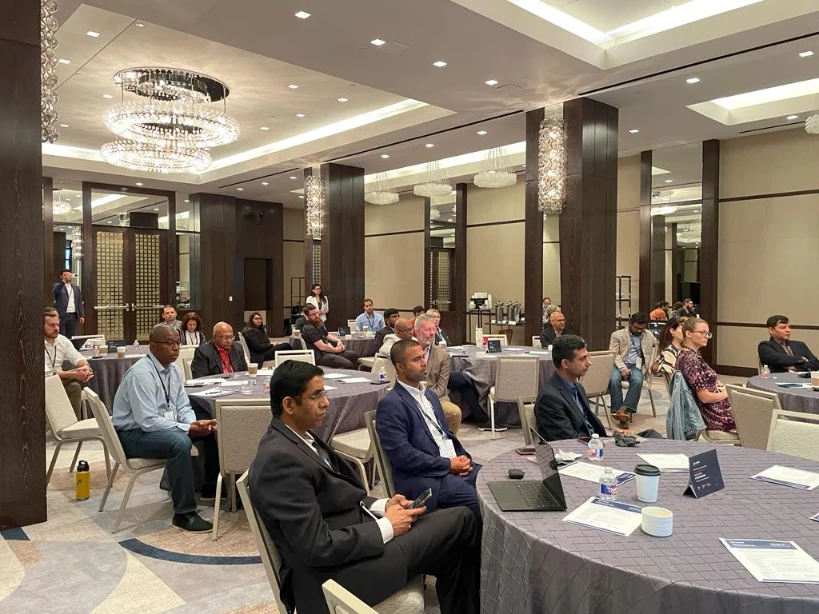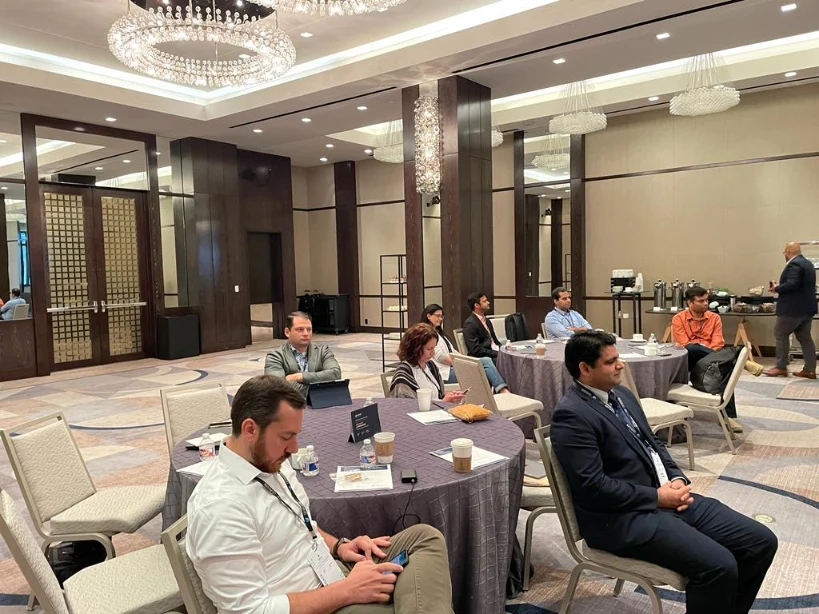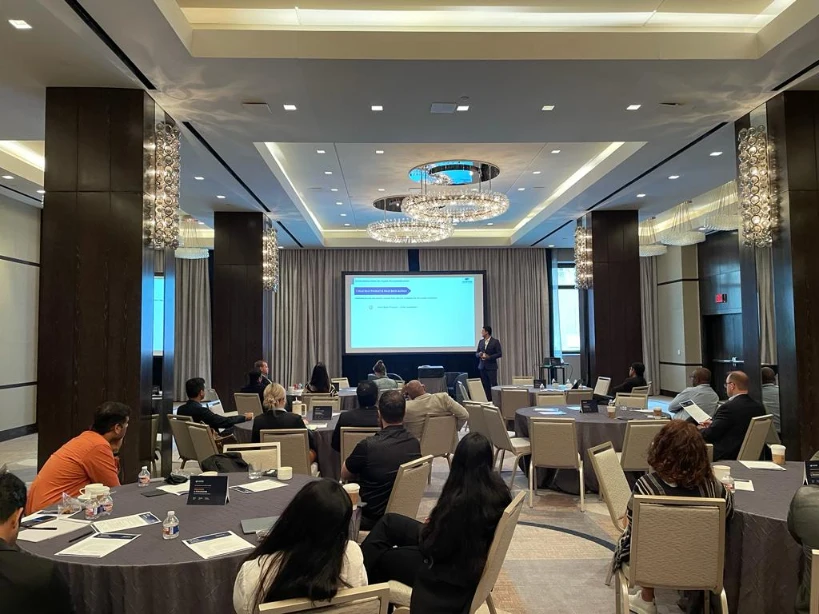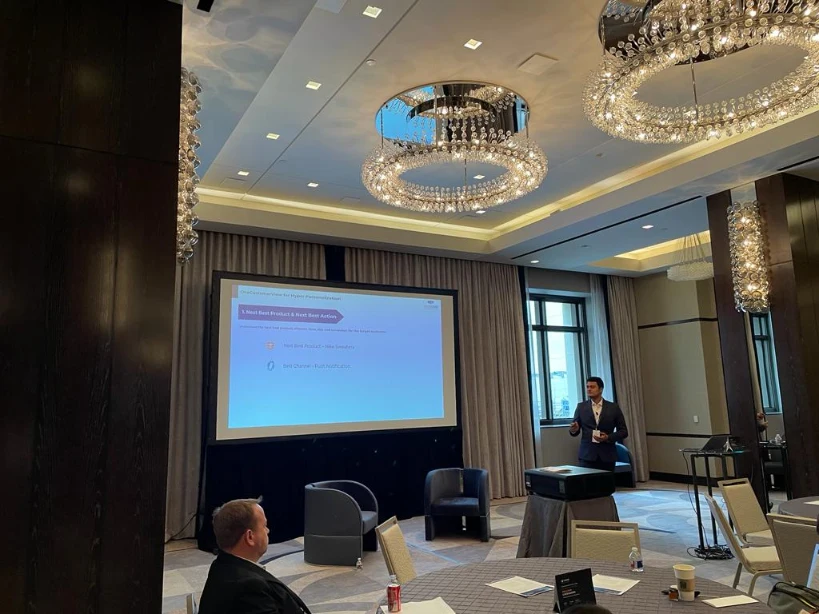
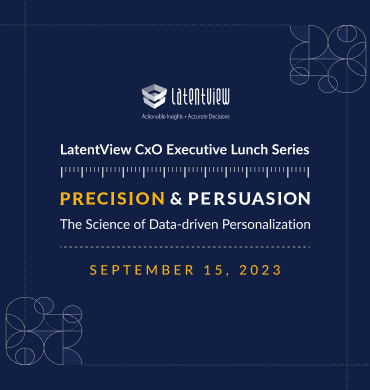
Welcome Address
Krishnan Venkata, Chief Client Officer, LatentView Analytics
The winning trick lies in achieving the delicate balance of personalization – this emerged as the central theme of the event and Krishnan Venkata’s welcome address. He highlighted the importance of finding the personalization sweet spot, where tailored experiences enhance customer satisfaction. He stressed the perils of over-personalization, recounting anecdotes where, by overstepping the personalization comfort zone, retailers have lost valuable clients and credibility. He emphasized the critical need for organizations to approach personalization with sensitivity and transparency, ensuring that it complements rather than compromises the customer experience. By striking this delicate balance, organizations can forge stronger connections with their clientele, foster loyalty, and ultimately drive sustainable growth in an increasingly data-driven landscape.
Keynote Address
Precision & Persuasion: The Science of Data-driven Personalization
Jai Kibe, SVP & CMO, ex-SC Johnson, ex-Coca Cola
- Promotional offer/email personalization
- Identifying consumer personas
- Campaign storytelling personalization
- Product personalization
- User-experience personalization
Panel discussion
Hyper-personalization and Customer Churn: Retention vs. Acquisition
Moderator
Sachin Chadha
Speaker
Ben Tienor
Speaker
Randy Jenovai
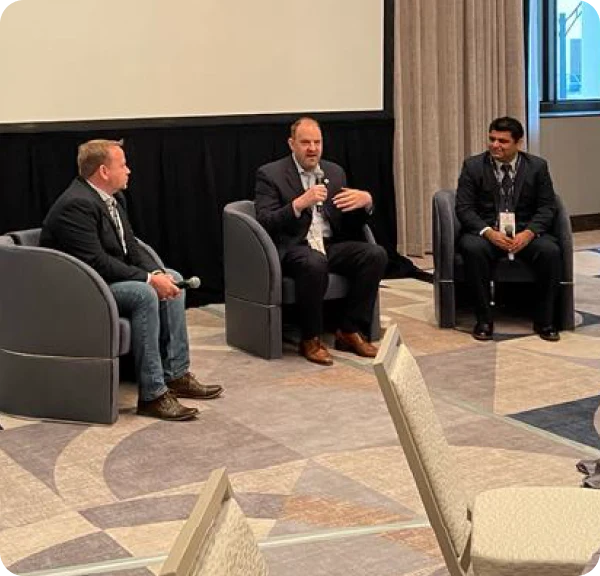
- Infuse empathy into your customer analytics and communication – Create segmentation based on customer attitudes and prioritize customer satisfaction based on the overall journey rather than individual touchpoints.
- Listen carefully for feedback on customer acceptance – Test and learn constantly to improve engagement. Do this by digging into upstream (likes, clicks, opens) and downstream (conversions, unsubscribes, ROI) engagement metrics. Engage with qualitative listening tools, like an ongoing shopper panel and ethnographic research and observation.
- Data management: Personalization initiatives require access to large amounts of customer data, which can be difficult to manage and analyze. Businesses need to have robust data management systems in place to ensure that their data is accurate, up-to-date, and secure.
- Organizational alignment: Personalization initiatives often require cross-functional collaboration and coordination across different departments within a business and across brands. This can be challenging, as different departments may have different priorities and goals.
- Identifying the balance between corporate strategy and customer interactions.
- Gathering and using customer feedback.
- Continuous experimentation with different versions of personalized experiences.
Doing so requires significant investment in technology. Businesses need to carefully evaluate their technology needs and make strategic investments to support their personalization initiatives.
Fireside Chat
The Personalization Equation: Decoding the Strategy-Tech Intersection
Speaker
TV Kumaresh
Speaker
Rajeev Rai
the C-suite, in what was a strategy-meets-technology masterclass.
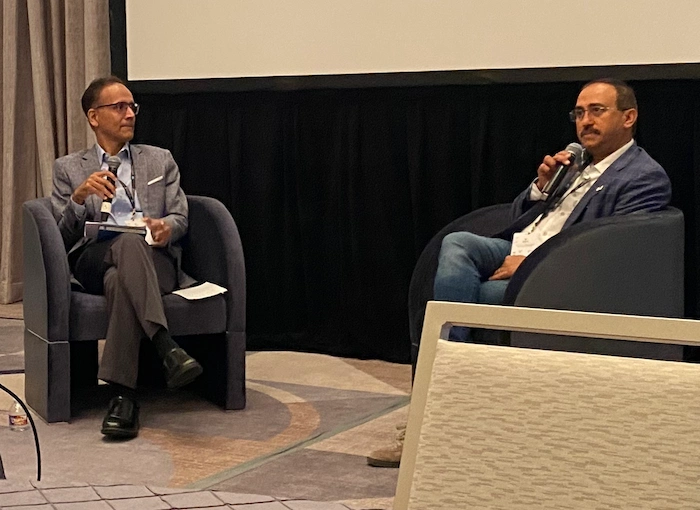
In this Fireside chat, the panelists approached personalization from the perspective of the C-suite, in what was a strategy-meets-technology masterclass.
The panelists spoke about how we have evolved from the era of strategy-led technology, and today, the two go hand-in-hand in driving the business forward. They discussed various examples of how industries like insurance and automobiles have moved from spreadsheets to more technology led inputs for determining credit scores of their clients.
Personalization needs to be more than just a bucket of tactics. Companies need to embrace personalization as an overarching strategy that spans every customer touchpoint from across sales, marketing, and customer service. The software/tech and those using it in the trenches must be aligned with CxOs and other leaders to find that sweet spot where strategy and tech intersect.
Looking at the future, both leaders emphasized that personalization has found a permanent spot in the marketing strategy of leading companies. With the integration of technology in driving forward personalization, the way ahead is only going to get more precise and focused for customers and brands alike, where the right consumer need is met at the right time by the right brand.
Our Past Events

Indirect Taxes: The Expense You Never Budget For
A new financial year begins, and with the Union government’s Budget rules for FY25-26 of ample tax exemption, you would expect more money in your

The Role of Data Analytics in Modern Financial Services
The Role of Data Analytics in Modern Financial Services Introduction Need for data analytics Functions Types Growth Strategy AI, Big Data & Blockchain Trends Challenges

Generative AI in Healthcare: How it’s Reshaping the Industry
Generative AI in Healthcare: How it’s Reshaping the Industry Generative AI in Healthcare Gen AI’s Impact Real-world Applications Key Challenges in Implementation Future Outlook About
